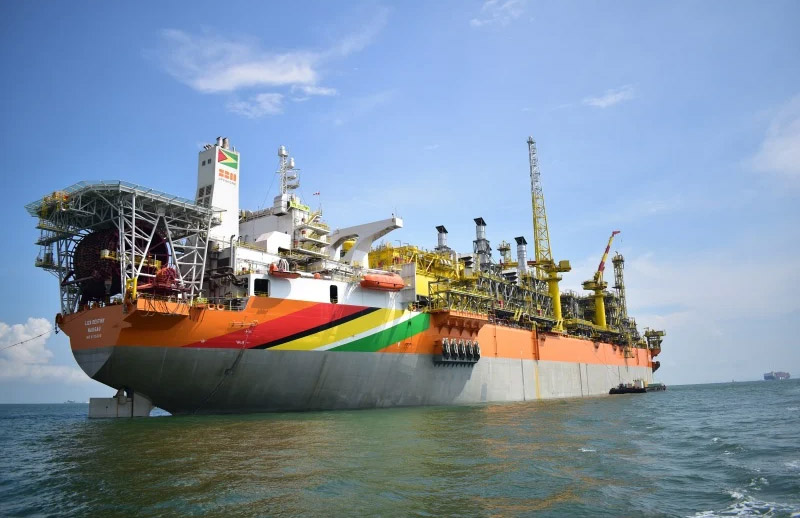With Venezuela still having to endure challenges associated with the underperformance of the country’s oil and gas sector, resulting largely from both the United States’ sanctions-driven pressures as well as the inherent underperformance of the industry, Brazil and Guyana are being promoted by the high profile energy media as the current ‘poster boys’ of the industry in South America. Last week, oilprice.com, one of the more globally popular energy news sites in the region singled out the two countries as being responsible for the “fuelling” (of) “Latin America’s oil resurgence.”
In a July 27th article, oilprice.com Latin American energy correspondent Matthew Smith wrote that Brazil, “with 14.9 billion barrels of proven reserves” and aiming “to boost oil output to 5.4 million barrels per day by 2029,” along with Guyana, “currently producing around producing 400,000 barrels per day on the back of a series of discoveries by Exxon since 2015” seem set to ‘boss’ the region’s oil and gas industry over the next decade. The oil production pecking order, Smith writes, has undergone a transformation, the result of “the near collapse of Venezuela’s once colossal oil industry under the weight of endemic corruption‚ and strict U.S. sanctions” along with Mexico’s “sputtering mature oil fields,” developments which he says, have pushed Latin America’s economically crucial hydrocarbon sector into decline.
Caracas’ long-standing political ‘run in’ with Washington, Smith asserts, meant that Venezuela’s oil output had crashed to an all-time annual low of 569,000 barrels per day. Mexico’s “sputtering aging oilfields”, according to Smith, had, meanwhile, been pumping “less than 1.7 million barrels daily.” Additionally, “a series of world-class offshore discoveries in Brazil’s territorial waters captured the attention of energy super majors and put Latin America back on the world hydrocarbon map.” It was shortly after that Brazilian windfall, according to Smith that Exxon-Mobil’s world-class offshore discoveries in Guyana’s territorial waters placed the country “on track to become a leading global petroleum producer and exporter.” And according to Smith, the recent oil and gas fortunes of Brazil and Guyana sees “Latin America poised to become a global hydrocarbon powerhouse once again.”
Brazil’s national oil company Petrobras made its first offshore deepwater pre-salt oil discovery in the Santos Basin in 2006, with ‘first oil’ being pumped a mere two years later. Those vast pre-salt reservoirs continue to deliver major world-class discoveries which have endowed Brazil, according to data from the regulator, the National Agency of Petroleum, Natural Gas and Biofuels, with 14.9 billion barrels of proven or 1P reserves. This now sees “Brazil holding the second largest oil reserves in Latin America after Venezuela,” Smith writes, adding that “those impressive oil reserves, along with ongoing discoveries, are sustaining Brazil’s epic offshore petroleum boom. There are clear indications that Brazil’s hydrocarbon reserves and production will continue to expand,” he continued.
According to Smith, Brazil’s Ministry of Mines and Energy is targeting significant production growth by implementing strategies to develop existing basins and lift output to 5.4 million barrels per day by 2029. If that ambitious target is achieved, it will make Brazil the world’s fourth-largest oil producer, he asserts. For May 2023, Brazil pumped an average of 3.2 million barrels per day, which was 11% greater than the equivalent period a year earlier. Total hydrocarbon output was 4.1 million barrels of oil equivalent per day for May 2023, a notable 9% higher year over year. While Brazil’s hydrocarbon production is growing at a steady clip, there is still a significant way to go before the country is lifting more than 5 million barrels per day with 80% flowing from the pre-salt layer, Smith writes. He asserts that it will take considerable investment in developing Brazil’s offshore hydrocarbon basins to lift production to the targeted volume.
Accordingly, Petrobras, as part of its 2023 to 2027 strategic plan, has allocated $64 billion to developing exploration and production assets, with 67% of that amount to be invested in pre-salt operations. By 2027, Petrobras envisages lifting 2.5 million barrels of oil per day and another 600,000 barrels of natural gas, seeing the company pump 3.1 million barrels of oil equivalent per day, with 78% being sourced from pre-salt fields, Smith says. Guyana, meanwhile, Smith writes, is now following in Brazil’s footsteps after ExxonMobil’s discovery of oil in the country’s territorial waters back in 2015. Since then, Guyana has been repeatedly referred to as “the world’s hottest offshore frontier oil play.” “Given the considerable petroleum potential believed to exist in Guyana’s shallow water and deepwater blocks, further oil discoveries are only a matter of time. Analysts estimate Guyana will be lifting 1.2 million barrels per day by the end of 2027, making the former British colony become a leading global oil exporter. This is delivering a mega economic boom for Guyana, which will have the fastest growing economy during 2023, with gross domestic product forecast by the IMF to expand by 37.2%., Smith writes.”








